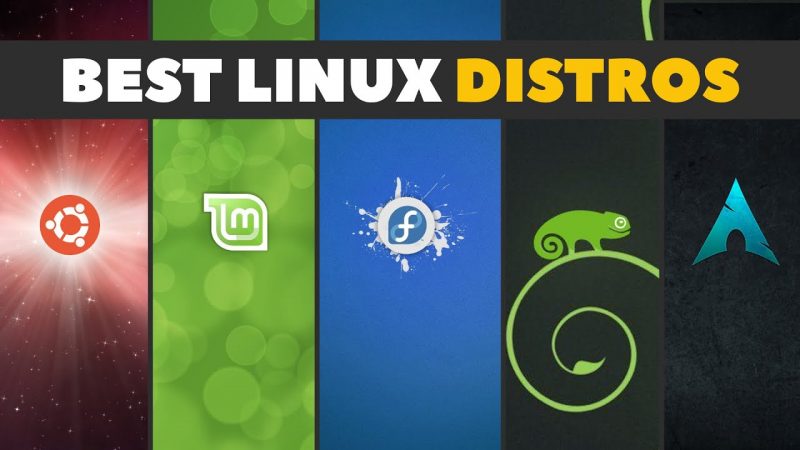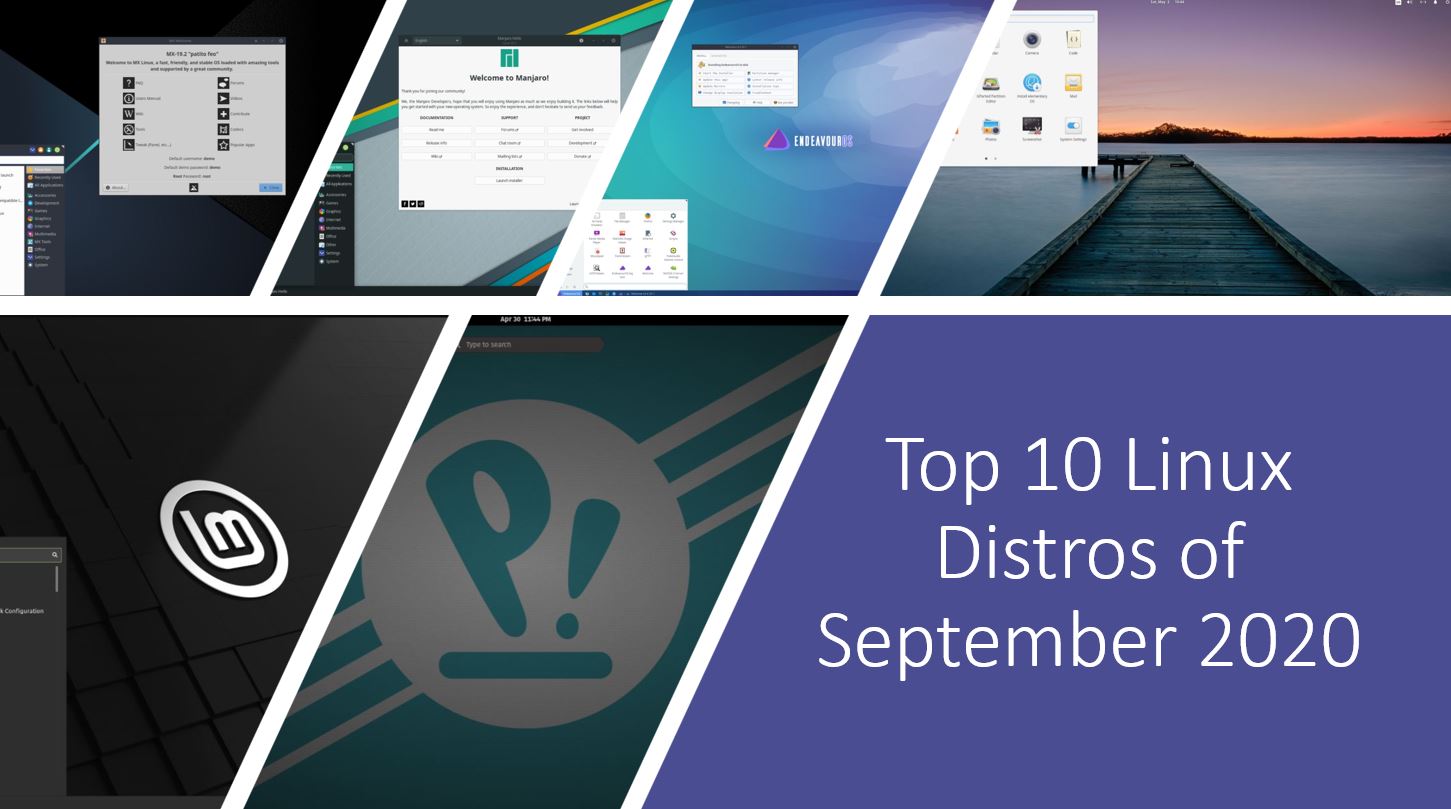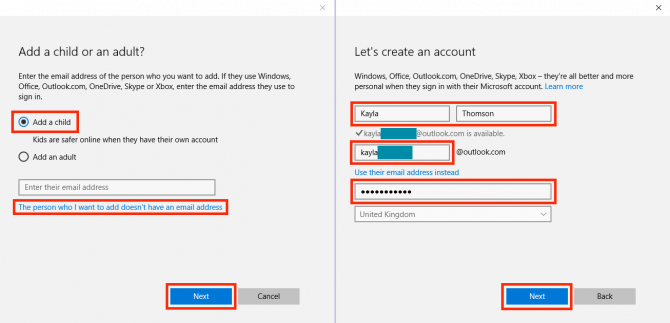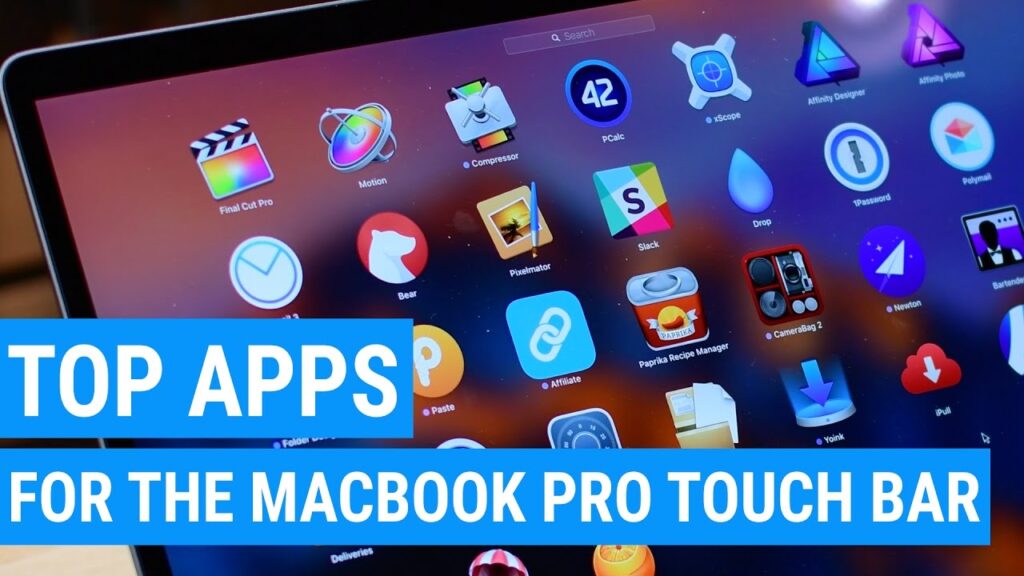
The process of crafting Linux distributions appears deceptively simple today. Select a preferred distro, tweak the desktop environment, integrate essential apps, perhaps adorn it with custom wallpapers, and proclaim your personalized Linux creation. Debates abound online regarding the authenticity of such derivatives, with both seasoned experts and novices grappling with the essence of a genuine Linux distribution.
Occasionally, a new distribution emerges, earning widespread acclaim from users. Many of these distros begin with a single developer’s innovative vision. Unfortunately, they often go unnoticed by the tech press. Hence, we present ten noteworthy Linux distributions – either for their original contributions to the FLOSS community or for their exceptional design and functionality.
1. AryaLinux
You may be familiar with Linux From Scratch (LFS), a DIY method for creating a Linux system using automated scripts. However, LFS can be challenging. Enter AryaLinux.
Prior to speculation, let it be clear: the nomenclature isn’t drawn from Game of Thrones; rather, it pays homage to the Indian civilization. AryaLinux aims to aid you in constructing a functional Linux system from the ground up. It offers two variants, XFCE and MATE, and functions akin to any other live distribution. Installation unfolds within the terminal, with the AryaLinux Builder tool guiding you through input stages.
The default build scripts only install a base Linux system. To add applications and a desktop environment, you’ll need to utilize ALPS (Arya Linux Packaging System), a straightforward package manager for installing applications and resolving dependencies. Application installation is determined by build scripts. However, ALPS currently lacks the ability to uninstall or upgrade applications, although this could change with future AryaLinux development.
What sets this Linux distribution apart?
- AryaLinux streamlines the LFS approach for creating your own distro.
- Features its own minimal package manager, ALPS.
- Employs Fusilli Window Manager as an alternative to Compiz.
2. Qubes OS
Compartmentalization and app isolation gained recent prominence, propelled by projects like Docker and partially implemented in Ubuntu’s snap packages. The core concept aims to enhance security by segregating running apps and services from the OS.
Technically, Qubes OS aligns more closely with a Xen distribution than a Linux one. Xen serves as a hypervisor, managing virtual machines directly on hardware, distinct from VirtualBox and VMWare which operate within an existing OS. Qubes OS leverages this architecture, employing a default system-level virtual machine, dom0, responsible for GUI control upon startup. Dom0 lacks network access and isn’t intended for running applications; that’s the role of AppVMs.
AppVMs, known as qubes, are based on TemplateVMs. Each TemplateVM contains software accessible to qubes, without modifying the TemplateVM filesystem. The default TemplateVM features Fedora.
The latest Qubes OS version substitutes KDE with XFCE as the default environment. Nonetheless, you can install other distributions or Microsoft Windows in additional TemplateVMs, allowing for multiple Linux distributions on a single Qubes OS system.
Qubes OS assigns security domains to qubes, represented in the Start menu by name or color. Apps in each qube have a distinct colored border. Manage qubes in Qubes VM Manager – add, remove, rename, and view active qubes and their TemplateVMs. Seamlessly move files and copy/paste between qubes.
What makes this Linux distribution unique?
- Qubes OS ensures security by isolating apps.
- Apps reside in context-based virtual machines.
- VMs can be based on various Linux distributions.
3. Endless OS
Outstanding open source projects possess the power to significantly improve lives. Endless OS epitomizes this potential. Tailored for novices and individuals lacking internet reliability, Endless OS prioritizes exceptional user-friendliness. It offers an extensive array of offline resources, including apps, educational videos, a vast library of books, and Wikipedia articles—all accessible at no cost.
Consider this: we often take much for granted due to our ability to “just Google it,” yet the resources offered by Endless OS prove invaluable, particularly in developing nations. Moreover, Endless OS serves as an excellent distribution for students of all ages, doubling as a portable knowledge repository for those seeking time away from the grid.
Endless OS diverges from the conventional package management system, meaning users are confined to the software available within the Endless App Center. Beneath the surface, it’s a significantly modified Ubuntu build, incorporating innovative projects like OSTree. This enables the utilization of multiple bootable filesystems housing various app versions on a single system. Its desktop interface, based on Gnome Shell, is further simplified to emulate a fusion of Microsoft’s Modern UI tiles and a standard smartphone home screen.
What Makes This Linux Distribution Unique?
- Endless OS caters to users without easy internet access, boasting an extensive offline content library.
- Featuring a read-only root filesystem, the distro utilizes OSTree for seamless software updates.
- The developing company offers budget-friendly computers preloaded with Endless OS.
4. GeckoLinux
While Ubuntu holds the title for the most remixed Linux distribution, openSUSE isn’t far behind. Through SUSE Studio, openSUSE can be customized and distributed, a phenomenon paralleling Ubuntu’s. Despite openSUSE’s strong performance in business contexts, it’s not commonly recommended as a daily desktop OS. Enter GeckoLinux, aiming to shift this perception with promising strides already taken.
GeckoLinux emerged due to the absence of Live installation media for openSUSE Leap. It offers a range of openSUSE versions and flavors for experimentation. There are two primary versions: Static (based on stable openSUSE Leap) and Rolling (derived from openSUSE Tumbleweed, a rolling-release branch). Additionally, GeckoLinux offers a selection of seven desktop environments (Cinnamon, Xfce, Gnome, Plasma 5, MATE, Budgie, LXQt), along with a minimalistic option featuring Openbox and essential apps.
If you’re into analogies, think of GeckoLinux as the Linux Mint of openSUSE. It enhances the original distribution’s user-friendliness by including proprietary codecs and simplifying third-party app installation, system administration, and package dependency management. What sets GeckoLinux apart is its browser-based trial feature.
What makes this Linux distribution unique?
- GeckoLinux simplifies trying out, installing, and using openSUSE Leap.
- It offers seven flavors, including Budgie and LXQt.
- An online version allows browser-based testing.
5. Void Linux
Void Linux boasts its independence as a Linux distribution, not reliant on any other project. It’s a lightweight distribution, booting remarkably fast even on older hardware, with its own package management system, XBPS. Advanced users seeking full control without complexity will find Void Linux highly appealing.
Void Linux stands out for not using systemd but relying on runit for service supervision and runlevels. In terms of security, it opts for LibreSSL, a more secure variant of OpenSSL. These distinct choices separate Void Linux from most other distributions. Additionally, XBPS offers various features: building packages from source using installation scripts, utilizing multiple repositories and sub-repositories, resuming unfinished updates and installations, and checking package errors.
Void Linux, a rolling release distribution, prioritizes delivering the latest software while maintaining a stable base system. Live images featuring Xfce, MATE, LXDE, Enlightenment, or Cinnamon desktop environments are available for download, eliminating the need for manual setup.
What sets this Linux distribution apart?
- Void Linux is built from scratch with its own package management system.
- It utilizes runit over systemd, LibreSSL over OpenSSL, and Dash as the default shell.
- No proprietary software comes pre-installed.

6. Subgraph OS
Perhaps you’ve never experienced it firsthand, but you’ve likely heard or read about individuals falling victim to Internet attacks. Malware isn’t the sole concern – there’s also government surveillance, along with tracking by advertisers and social networks. Protecting oneself online is increasingly challenging.
Subgraph OS operates on the assumption that your computer will inevitably become a target. Consequently, it’s fortified to resist breaches and mitigate harm. Picture Subgraph OS as an exceptionally secure cake, featuring numerous layers of protection and enhancements.
Subgraph OS mandates disk encryption; it cannot be installed on an unencrypted filesystem. The kernel incorporates Grsecurity patches. Applications needing network access, like browsers, messengers, and email clients, operate within individual containers (sandboxes) and utilize Tor for connections. Metaproxy ensures each application has its own Tor circuit, with an additional firewall for protection. Most of these security measures are preconfigured, maintaining the familiar look and feel of the distribution, based on Debian and employing Gnome 3.
What makes this Linux distribution unique?
- Subgraph OS prioritizes user security by aiming to be an adversary-resistant distribution.
- Applications are sandboxed and utilize Tor for network connectivity.
- The kernel is hardened with Grsecurity, and filesystem encryption is essential.
7. Nix OS
Nix OS showcases the Nix package manager, an innovative project particularly attractive to enthusiasts of functional programming. Nix constructs everything from declarative configuration files, applying the package manager’s principles consistently throughout the OS.
This enables configuring the entire system via a single file and replicating it on another computer seamlessly. Changes to the configuration prompt automatic rebuilding of affected packages, eliminating the need for manual updates. Nix OS inherently supports system rollbacks; each new configuration is saved and isolated from previous ones, allowing effortless reverting to the previous setup if needed.
In Nix OS, root access isn’t necessary for app installation. Each user has their profile, storing installed packages. Multiple versions of an app can be installed without overlap. The downside? Familiarity with its build language is required for system maintenance. Installation is somewhat complex but well-documented. Nix OS provides Live installation media with KDE and supports other environments too.
What Makes This Linux Distribution Unique?
- Nix OS enables creation of a portable system described in a single configuration file.
- Apps are isolated, allowing simultaneous operation of multiple software versions.
- Easily revert the system to its previous state by loading an older configuration.
8. Guix SD
One might assume no difference exists between Ubuntu and Linux Mint – yet, they’d err. Similarly, Nix OS and Guix SD, while akin on many fronts, diverge notably in software freedom. Guix SD stands out as a rare GNU/Linux distribution adhering to the GNU Free System Distribution Guidelines, earning the esteemed 100% Free label from the Free Software Foundation.
Consequently, Guix SD employs dmd (GNU Shepherd) instead of systemd, and features the Linux-libre kernel, free from proprietary code. Like Nix OS, Guix SD is configured through declarative files, albeit using GNU Guile for Scheme implementation, unlike Nix’s native language. Nonetheless, this doesn’t hinder Guix SD’s access to Nix packages, which can be enabled through the “import” option in the Guix package manager.
The rest remains unchanged: Guix SD allows for multiple versions of the same application without interference. Package building is separate from the system, ensuring it cannot cause damage or undesired configuration changes. Guix SD offers Gnome, Xfce, and Enlightenment as desktop options, although a graphical installer is not yet available.
What sets this Linux distribution apart?
- Guix SD encompasses all the features of Nix OS, except systemd and binary kernel blobs.
- It utilizes the Scheme programming language for configuring packages and the system.
- Endorsed by the Free Software Foundation as a fully free distribution.
9. Bedrock Linux
Picture the ideal Linux distribution. It’d cherry-pick the finest elements from other distributions, seamlessly integrating them. Bedrock Linux inches closer to realizing this vision.
As an experimental distro, it won’t serve as your default OS just yet. Nonetheless, it merits attention for its potentially groundbreaking approach. Bedrock Linux prompts you to install additional Linux distributions, then assimilates them into one cohesive system. With Bedrock Linux, you can utilize multiple Linux distributions concurrently, seamlessly blending them. You can run three applications from disparate distributions simultaneously on the same desktop. Furthermore, Bedrock Linux facilitates accessing newer software versions from alternate distributions if they’re unavailable in your preferred one.
Configuring Bedrock Linux is challenging, and Live mode isn’t supported. However, it presents a compelling concept with ambitious plans for the future. We anticipate their success.
What sets this Linux distribution apart?
- Bedrock Linux merges multiple Linux distributions into one system.
- It enables simultaneous use of apps from different distributions.
- You can select the init system based on the installed distributions.
10. Maru OS
Maru OS might be seen as “cheating” since it’s not installable on computers but rather an OS for Android smartphones. It aims to replace the default system and introduce convergence.
Maru OS operates in two distinct modes. The mobile mode, based on Android Lollipop, functions like a typical smartphone. The desktop mode, which runs on Debian Jessie, activates when the phone is connected to a screen via an HDMI cable. This transition unleashes the device’s potential, transforming it into a fully operational desktop OS.
The desktop interface adopts a sleek Xfce setup, requiring Bluetooth peripherals (mouse and keyboard) for navigation. Seamlessly, files can be transferred between desktop and mobile modes, accessible regardless of the active mode, thanks to containerization. Maru OS offers a 2-in-1 solution, empowering users to carry a complete desktop Linux system wherever they go. Canonical, take note.
Maru OS still has some issues. Currently, it only supports the Nexus 5, and Google Play isn’t installed by default (though there are workarounds). Users have reported problems with display timeout while Maru OS is running in desktop mode, as well as significant battery drain. Nevertheless, we believe Maru OS is worth trying; if nothing else, for the novelty.
What makes this Linux distribution special?
- Maru OS is a Linux distribution for Android phones.
- It enables your smartphone to be completely context-aware, allowing it to function as a desktop computer.
- You can access Android files on Linux and vice versa.
Noteworthy Linux Distros
These distributions demonstrate the Linux community’s ongoing creativity and readiness for the future. Other notable projects include Trenta OS and the Clear Linux Project.
Are there any other intriguing Linux distros you’re aware of? Have you tried any from this list? Share your thoughts in the comments!

Pritam Chopra is a seasoned IT professional and a passionate blogger hailing from the dynamic realm of technology. With an insatiable curiosity for all things tech-related, Pritam has dedicated himself to exploring and unraveling the intricacies of the digital world.



